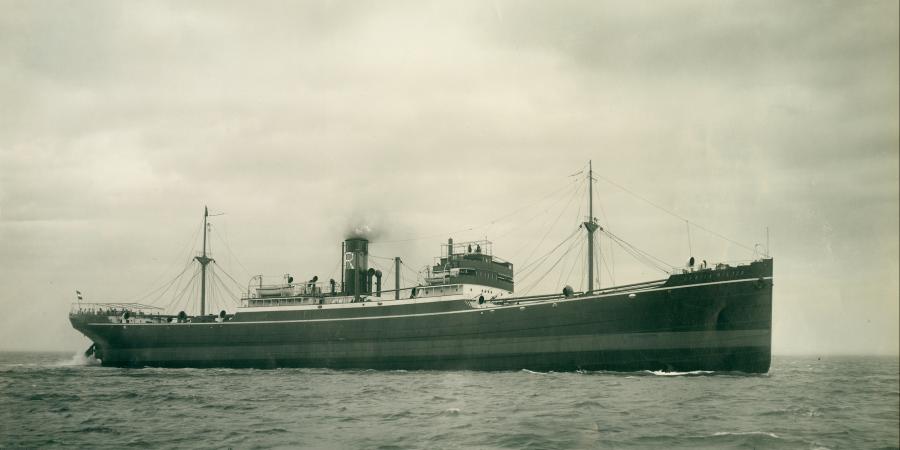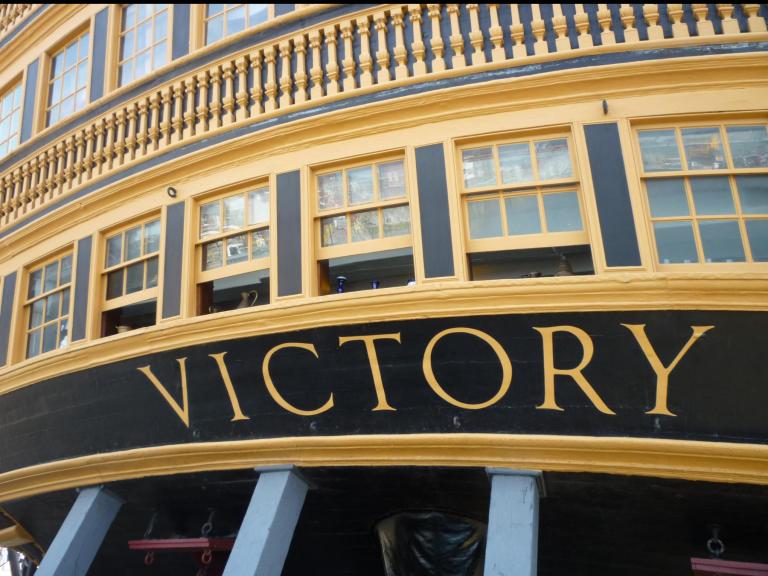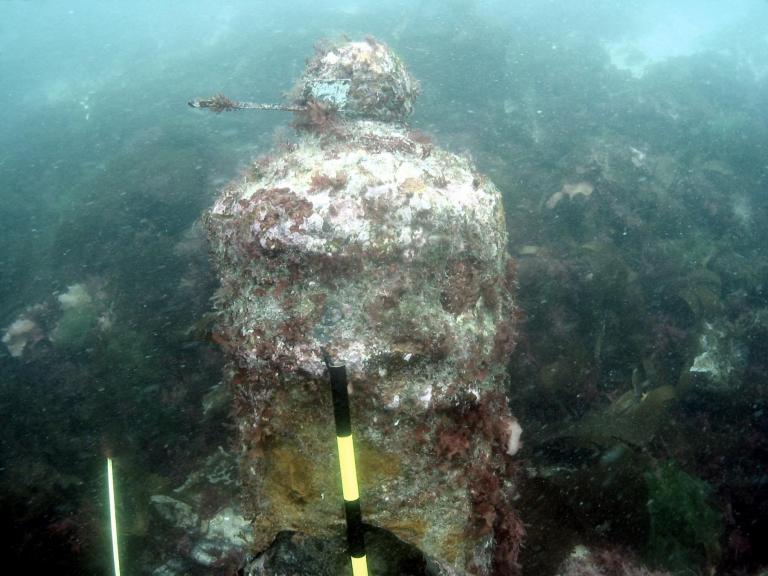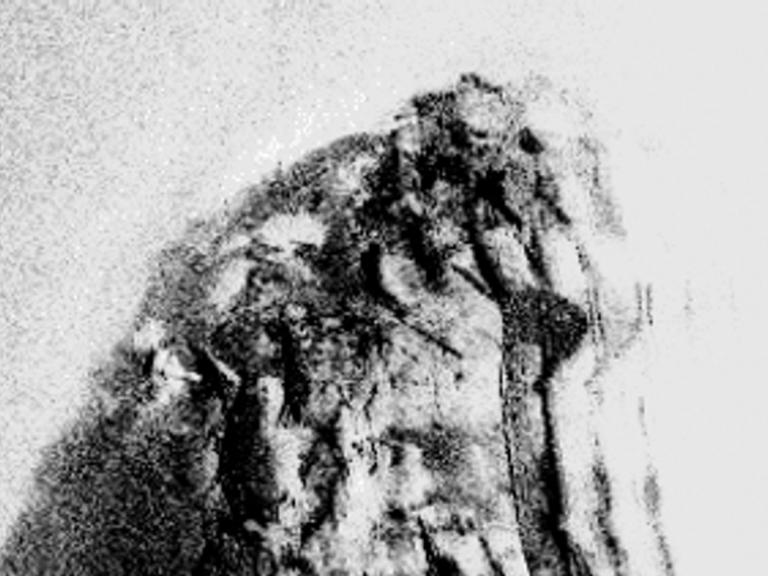Wessex Archaeology has worked with innogy on the Galloper Offshore Wind Farm since 2010. During the pre-construction marine geophysical surveys, a ships bell was discovered sitting on the seabed, belonging to the SS Carica Millica.
Wessex Archaeology has worked with innogy on the Galloper Offshore Wind Farm since 2010. Prior to the development gaining consent, Wessex Archaeology undertook a desk-based assessment including interpretation of geophysical survey data to identify potential archaeological assets on the seabed and an assessment of palaeolandscapes. The desk-based assessment was used as a baseline for the preparation of the Environmental Impact assessment and preparation of the draft Written Scheme of Investigation (WSI).
Following consent, in 2016 Wessex Archaeology undertook the assessment of data acquired during pre-construction marine geophysical surveys for Galloper Offshore Wind Farm (GOWF), off the coast of Suffolk.
The development comprises 56 wind turbines with a total installed capacity of 353 megawatts (MW), enough to generate power to supply the equivalent of around 380,000 UK homes with green energy every year.
Project objectives
Geophysical surveys were required prior to the wind farm’s construction to investigate the area of seabed, 8km east of Orford Ness, and the proposed cable route connecting the site to the mainland.
The surveys aimed to inform the appropriate mitigation strategies for the scheme, reducing risk to the historic environment by creating a route which avoided (where possible) areas of archaeological interest.
Archaeological mitigation work would also contribute towards a greater understanding of the nature, character and extent of the marine archaeological environment.
“Offshore archaeological surveys were carried out when planning and building Galloper to make sure we avoided wrecks and identified any unexploded ordnances or other finds of potential archaeological interest. These surveys have the potential to both protect and improve the awareness and knowledge of the UK’s underwater cultural heritage.”
[Galloper and innogy’s Senior Consents Manager Colin McAllister]
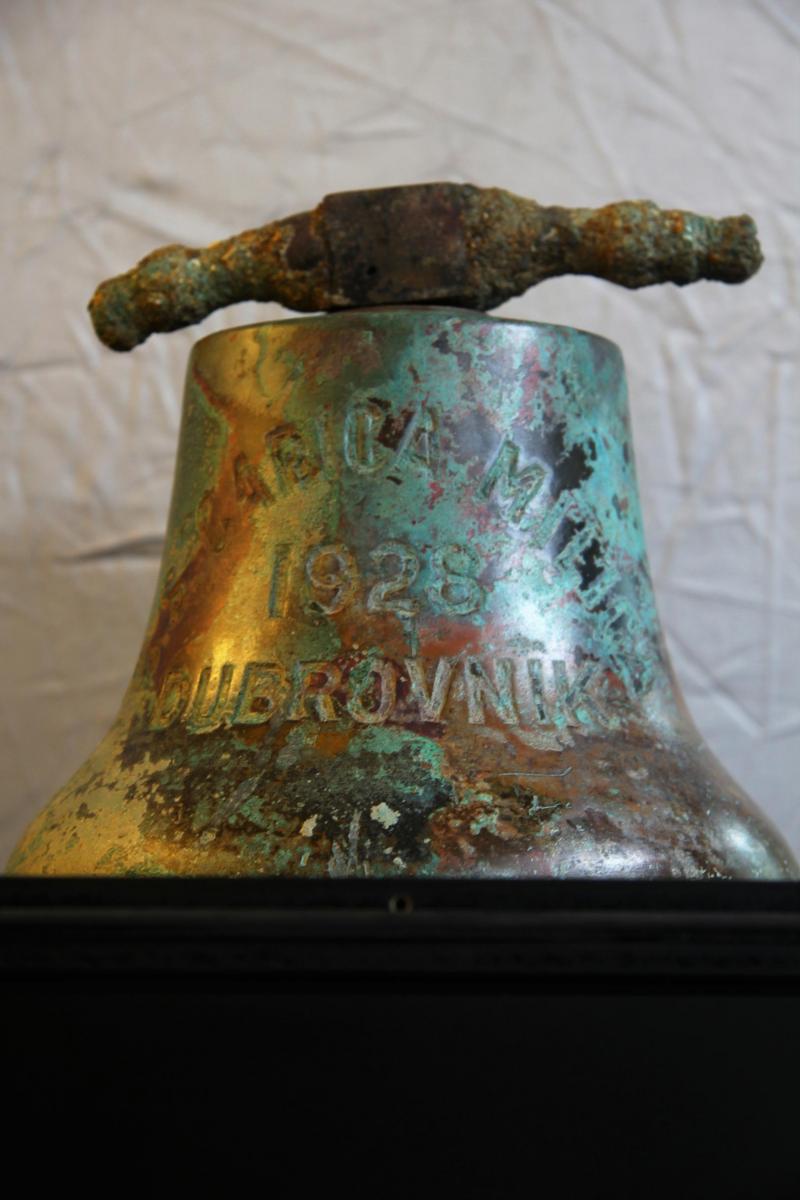
Discovery of the Bell
Geophysical data showed a series of anomalies within an area of approximately 35m by 12m on the seabed along the planned route of the wind farm’s electrical cable.
The team deployed a Remotely Operated Vehicle (ROV) to investigate the area further, which located and identified the bell sitting on the seabed, alongside what was thought to be possible wreck-related debris.
During the initial assessment of ROV survey data including stills and video footage, the ship’s name was clearly identified on the bell as the steamship Carica Milica. Engravings cast into the brass bell read ‘SS CARICA MILICA’, ‘1928’ and ‘DUBROVNIK’. Black paint is still visible in the recesses of the lettering which would have made the engravings stand out. The numbers ‘586’ are visible stamped onto the crown of the bell and these represent the yard number in Sunderland where the ship was built.
Information from the United Kingdom Hydrographic Office (UKHO 10539), revealed that the Carica Milica was charted as a live wreck, which had gone missing in 1939. Wessex Archaeology’s research discovered that the Carica Milica was a steamship built in Sunderland in 1928 by William Doxford & Sons to transport coal for a Yugoslavian shipping company with a home port of Dubrovnik.
The ship sank on 18 November 1939 off the coast of Suffolk having struck a mine laid that day. All 26 crew were rescued. The vessel was the first Yugoslavian maritime casualty of the Second World War.
After being carefully recovered from the seafloor, the bell was transported to Wessex Archaeology’s Salisbury office for careful conservation by experts, which included extracting damaging marine salts followed by a controlled drying process before adding a layer of protective wax to its surface.
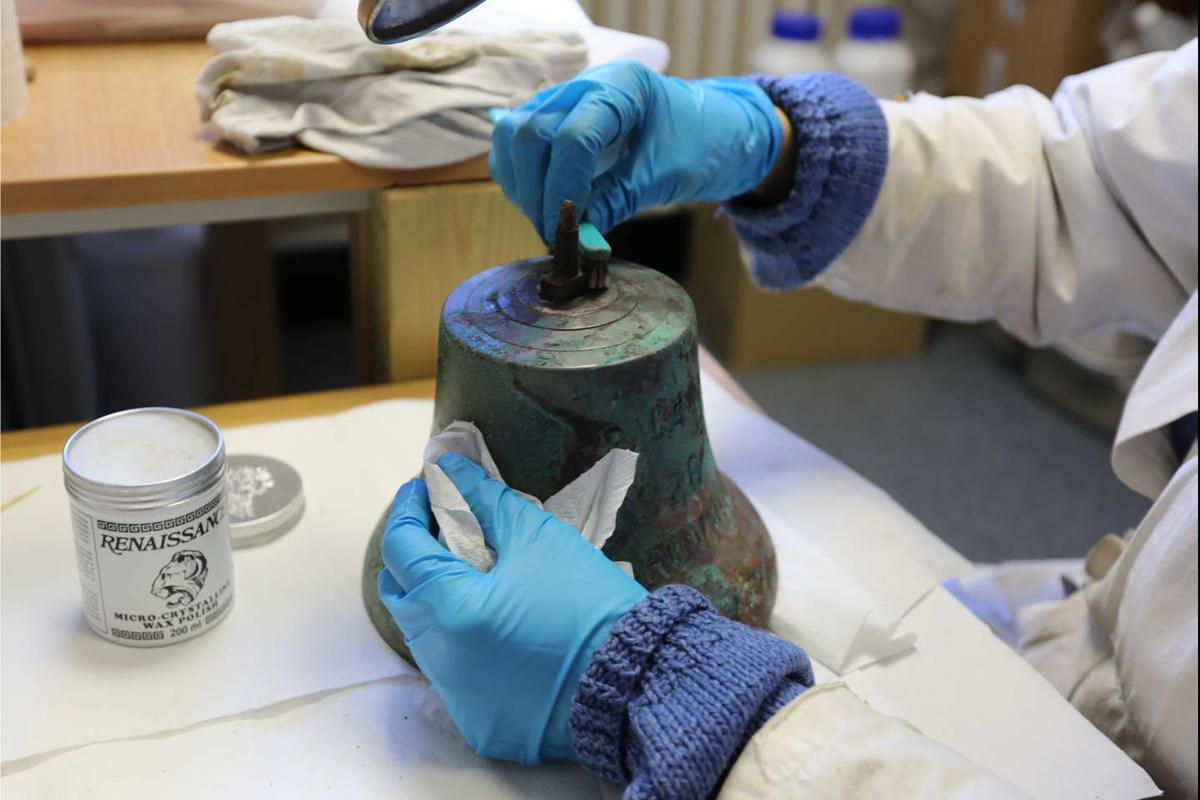
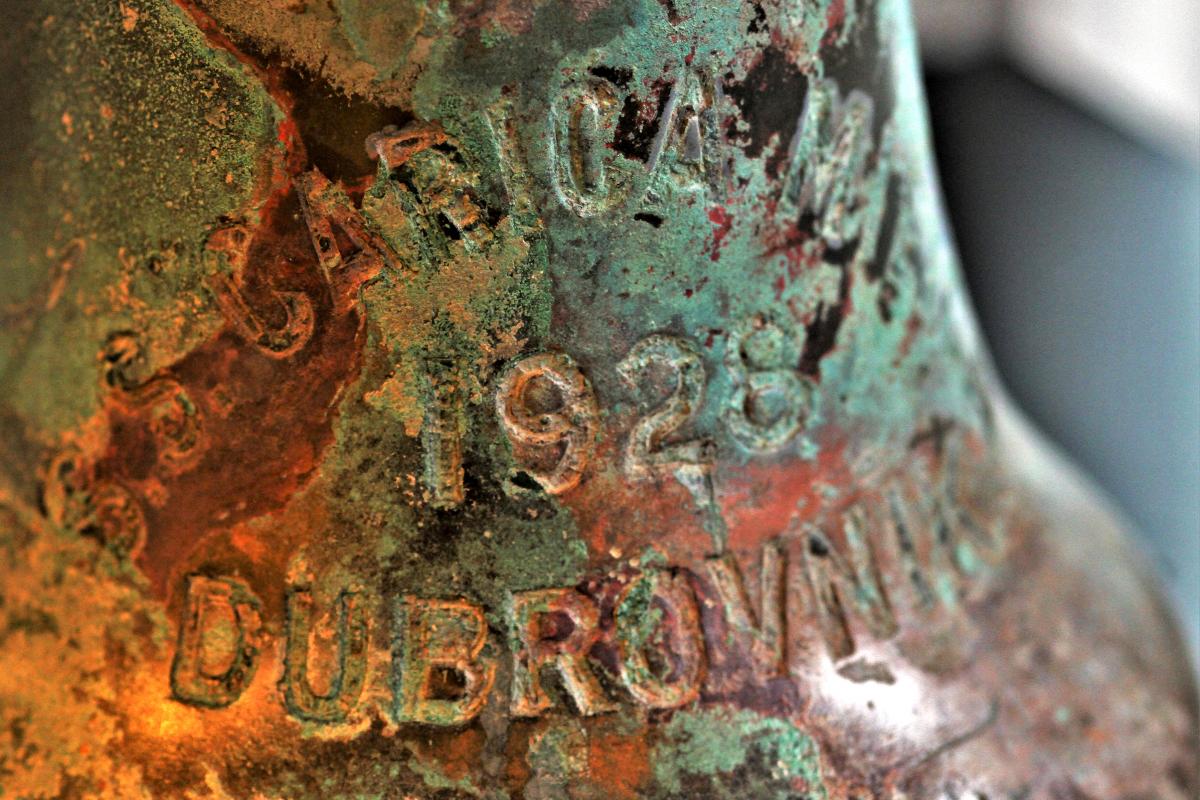
Conservation work
As the bell was recovered from a marine environment, the first task for Wessex Archaeology’s in-house conservator was to gradually extract the marine salts that had built up within it. If the bell was dried without first removing these, the metal would start to corrode, causing serious damage to the artefact.
In order to avoid this, the bell was kept wet, and the conservator periodically tested the water it was stored in and replaced it with fresh water. This was a lengthy process – it was almost a year from the start of this desalination process until the water surrounding the bell consistently maintained the same chloride level as tap water. The bell was ready to be dried – but not before the conservator had carefully removed any marine concretions (mineral build-up) that had formed over its surface, a task that had to be completed while the bell was still wet.
The next step was to air dry the bell very gradually in a sealed environment. This process used silica gel, which reduces the relative humidity around the bell by absorbing water – it is a controlled method that prevents ‘flash corrosion’ which can occur when a metal object is dried too quickly.
Once the bell was dry, the final step was to apply a layer of protective wax to its surface, preventing contamination and creating a barrier against moisture in the air that might cause future deterioration. The artefact was finally safe to go on display – and in March of this year the bell returned home to its native Sunderland.
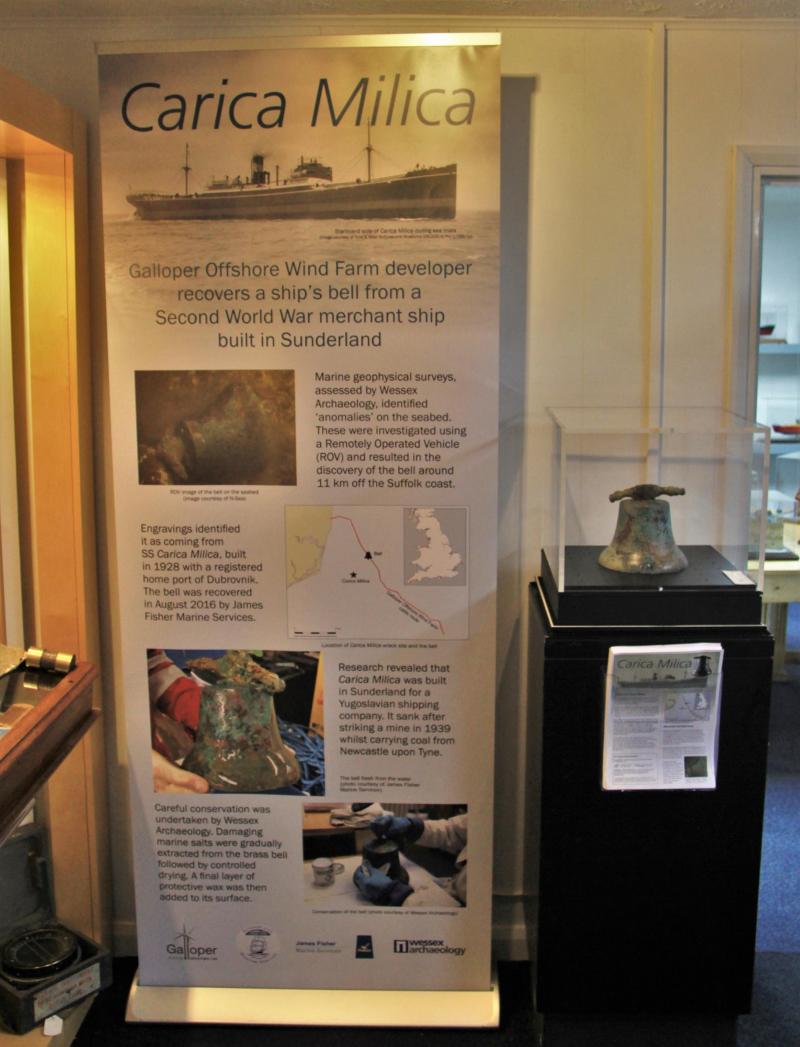
Return to Sunderland
After 90 years on the seabed, Wessex Archaeology’s Coastal & Marine team returned the bell to its Sunderland birthplace. The visitor centre at Sunderland Maritime Heritage has been recently redeveloped, and it was in this exciting new space that a special event was held in honour of the bell’s return. It was attended by our Coastal & Marine Director, Dr Dan Atkinson, alongside local dignitaries
Ian Murray from Sunderland Maritime Heritage said: “We are delighted to see the bell back in its birthplace of Sunderland and available for the whole community to visit and enjoy. We hope that people who visit Sunderland Maritime Heritage to see the bell will be as fascinated as we were by the story of this vessel and the bell’s eventful journey from Sunderland to Suffolk and then back to the North East to its final resting place.”
As well as the recovery of the bell, Galloper Offshore Wind Farm has funded its conservation, the custom-made display case and the preparation of the associated materials that have enabled it to go on show at the Sunderland Maritime Heritage’s visitor centre.
[Galloper’s Colin McAllister]
innogy SE led the construction of Galloper, and operates the wind farm on behalf of the project partners: Siemens Financial Services, Sumitomo Corporation, ESB and a consortium managed by Green Investment Group and Macquarie Infrastructure and Real Assets.
Main image (top) courtesy of Tyne and Wear Archives and Museums (DS.DOX/4/PH/1/586/1)
